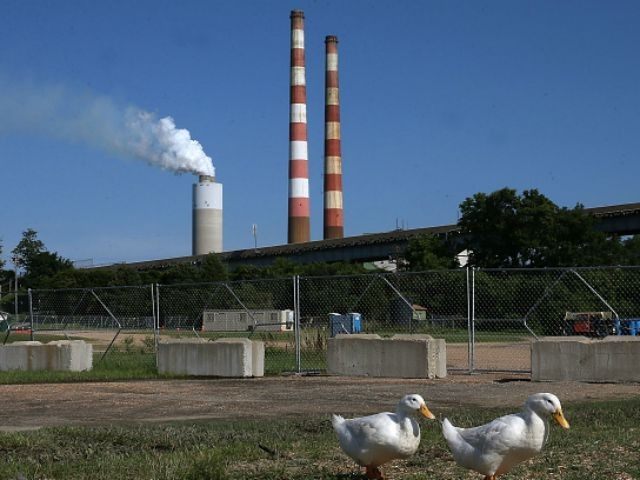Rep. Eddie Bernice Johnson (D-TX) finally heard the truth about EPA’s global warming rules at a Sep. 11 House Science Committee hearing. It was obviously all news to her.
EPA issued its so-called Clean Power Plan last August. Under the plan, carbon dioxide emissions from coal-fired power plants are to be reduced 32 percent by the year 2030. Because the rule would have a negligible impact on atmospheric levels of carbon dioxide and, hence, no discernible impact on global climate or weather, EPA tried to bolster the rule by claiming it would prevent up 6,600 “premature” deaths and 90,000 asthma cases per year.
Rep. Johnson came to the hearing armed with EPA’s claims and tried to use them in an effort to discredit key Republican witness, Bryan Shaw, the chairman of the Texas Commission on Environmental Quality. But unlike the EPA-informed Rep. Johnson, Shaw came to the hearing knowing what he was talking about.
Rep. Johnson began her questioning of Shaw by trying to portray opponents of the EPA rules as wantonly and recklessly endangering the health of children. She asked Shaw whether EPA critics factored into their cost-benefit analyses billions of dollars of unreimbursed medical expenses spent by the states to treat children with respiratory problems.
Shaw matter-of-factly explained to Rep. Johnson that she had been misinformed about the EPA rule. He noted that the EPA ruled is targeted at greenhouse gases, which which do not have an impact on respiratory health. Flabbergasted, Rep. Johnson asked Shaw to repeat what he said. After he did, an obviously perplexed Rep. Johnson then asked Shaw on what EPA’s respiratory health claims were based.
Shaw explained that the EPA’s health benefit claims were based on the rule’s so-called “co-benefits.” That is, reductions in carbon dioxide emissions from coal plants would also simultaneously and additionally lead to reductions in other conventional coal plant emissions, like particulate matter and various components of smog. EPA has for years claimed that these emissions cause respiratory problems. But Shaw rightly described these EPA claims as “mostly unsubstantiated.” (We’ll get back to this point in a moment.)
Shaw then proceeded to point out that to the extent local air quality needed to be improved, EPA already had other programs that directly focused on conventional emissions and that Rep. Johnson’s own congressional district already met EPA air quality standards. Not knowing what to do with such a knowledgeable expert witness, at the end of her 5-minutes of questions, Rep. Johnson meekly withdrew by asking Shaw to submit to her documents supporting his testimony.
The exchange highlighted the smoke-and-mirrors nature of EPA’s Clean Power Plan claims. Knowing that the relatively miniscule reductions in carbon dioxide from coal plants wouldn’t have any impact on global climate — even if it were true that global climate was super-sensitive to atmospheric carbon dioxide levels — EPA decided to fabricate its health claims.
While Shaw politely dismissed the EPA’s co-benefits claim as “unsubstantiated,” the more accurate description of them is “flat-out lie.”
For decades, EPA has conducted essentially secret experiments in which agency and agency-funded scientists intentionally exposed human beings (including children, the sick and elderly) to unrealistically high levels of various air pollutants and combinations of air pollutants in hopes of causing some sort of health harm to the subjects. But EPA’s experiments have never been able to cause so much as a cough or wheeze among its human guinea pigs, let alone a death.
The purpose of these (inhuman and illegal) experiments was to develop actual biological or medical evidence that air pollution harms health. This medical evidence is needed because, without it, EPA only has some dubious statistical evidence on which to rely — evidence that it has admitted in federal court is insufficient to substantiate the notion that typical levels of air pollution harm human health.
EPA’s statistical evidence is so flimsy that the agency has — for more than 20 years — hidden from the public and Congress the raw data on which the statistics are based. The House has subpoenaed EPA and has even passed a bill barring EPA from relying secret science. But the data remains locked away from public scrutiny.
Rep. Johnson has long helped EPA keep this raw data secret. One can always hope that the embarrassing public schooling she got from the Texas environmental commissioner will cause to her to cease continuing as EPA’s stooge.
Steve Milloy publishes JunkScience.com (Twitter @JunkScience).

COMMENTS
Please let us know if you're having issues with commenting.